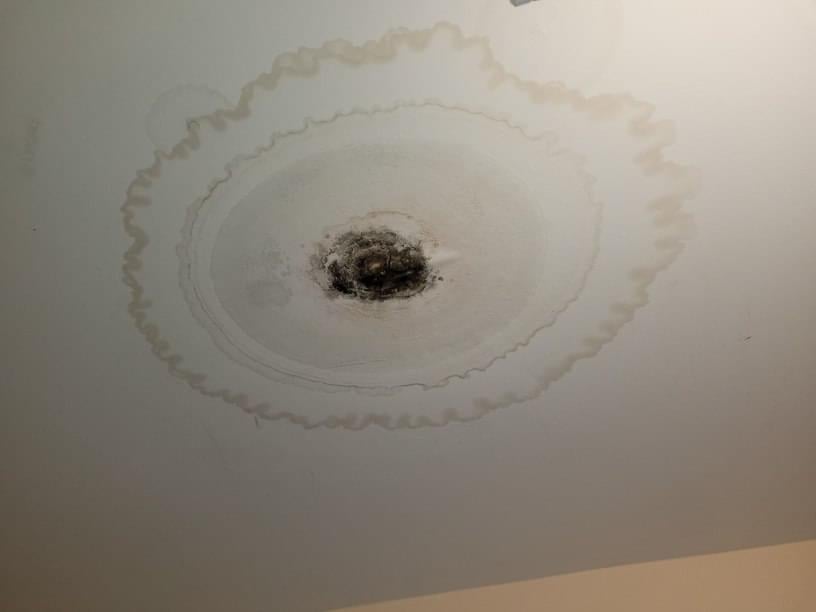6 Ways to Find Concealed Water Leaks in Your Home
6 Ways to Find Concealed Water Leaks in Your Home
Blog Article
We've found the article pertaining to Locating water leaks down the page on the net and believe it made good sense to share it with you here.

Early discovery of dripping water lines can mitigate a prospective calamity. Some small water leaks may not be visible.
1. Analyze the Water Meter
Examining it is a guaranteed method that aids you discover leakages. If it moves, that indicates a fast-moving leak. This indicates you may have a slow-moving leakage that could also be underground.
2. Inspect Water Intake
If you detect sudden modifications, in spite of your consumption being the exact same, it implies that you have leakages in your plumbing system. A sudden spike in your costs shows a fast-moving leak.
On the other hand, a constant increase each month, despite the exact same habits, reveals you have a slow leakage that's likewise slowly escalating. Call a plumber to completely check your residential or commercial property, particularly if you feel a cozy area on your floor with piping beneath.
3. Do a Food Coloring Test
When it comes to water usage, 30% comes from commodes. If the shade in some way infiltrates your dish throughout that time without flushing, there's a leak in between the container and bowl.
4. Asses Outside Lines
Don't forget to check your exterior water lines also. Examination spigots by attaching a garden pipe. Should water permeate out of the link, you have a loosened rubber gasket. Replace this as well as guarantee all links are limited. If you have actually got a sprinkler system, it will help get it skillfully examined and also maintained each year. One little leakage can throw away lots of water as well as spike your water costs.
5. Examine the situation and inspect
Property owners ought to make it a habit to examine under the sink counters as well as even inside cabinets for any kind of bad odor or mold growth. These 2 red flags show a leakage so prompt focus is needed. Doing routine examinations, also bi-annually, can save you from a major problem.
Examine for stainings and compromising as a lot of pipelines as well as home appliances have a life expectancy. If you believe leaking water lines in your plumbing system, don't wait for it to intensify.
Early detection of dripping water lines can alleviate a possible catastrophe. Some small water leakages might not be visible. Checking it is a proven way that assists you uncover leaks. One small leakage can throw away tons of water as well as increase your water expense.
If you think dripping water lines in your plumbing system, don't wait for it to rise.
The Dangers of Undetected Water Leaks
Mold
One of the most common results of undetected water leaks in your home is mold. Under the right conditions, mold can begin to grow and spread in just a day or two.
Moisture from water leaks combined with humidity and lack of ventilation allow mold spores to germinate and start spreading.
And while household mold doesn’t carry the same health risks as substances like asbestos, they can cause allergic reactions in people sensitive to them or with asthma.
Structural Damage
When water leaks occur in places we can’t see — above the ceiling, behind walls or beneath floors — they often have time to do some serious damage before making themselves known.
You might notice cracks or bubbles appear in your walls or a slow drip or water from the ceiling.
These are signs of water leaks and buildups in the structure of your home. If you don’t jump on these problems soon enough, the wood frame that supports your house could start rotting, leading to costly repairs and increasing the risk of disasters like ceiling or wall collapses.
Water Waste
According to the Alliance for Water Efficiency, the average home can lose anywhere from 2,000 to 20,000 gallons of water per year due to leaks.
High numbers like that might make you imagine a burst pipe spewing out water. But believe it or not, even a small, constant drip from a kitchen sink could add up to over a thousand gallons of wasted water in a single year.
And if you live in a place where you pay for every gallon of water you use, that adds up to a lot of dollars down the drain. So we understand leaks are bad. Let’s take a look at some of the common (and not-so- common) water leaks you might find around your home.
Flush Valve Flapper
The flush valve flapper is a rubber flap that sits above the flush valve at the bottom of the tank. It’s attached to the flusher with a chain. Over time, it can get worn out and lose its seal, causing an endless flow of water into the toilet bowl.
These leaks are hard to detect since they’re usually silent, but there’s a little insider trick you can use with just a little dye or food coloring:
Put a few drops in the toilet tank. Check the water in your toilet bowl 15 minutes later. If any of the color made it into the toilet bowl, you’ll know what the culprit is.
Fill Valve
The fill valve is what replenishes your toilet’s tank water after you flush. If you’ve ever looked inside your toilet tank and seen water gushing out of an upright plastic valve, that’s a faulty fill valve.
https://meetflo.com/blogs/flo/how-to-find-and-repair-water-leaks-a-comprehensive-guide

Do you enjoy reading about Hacks to detect leaks? Put feedback down the page. We would be interested to listen to your feelings about this page. We are looking forward to see you back again in the near future. Sharing is nice. Helping others is fun. Thanks for your time. Visit again soon.
Report this page